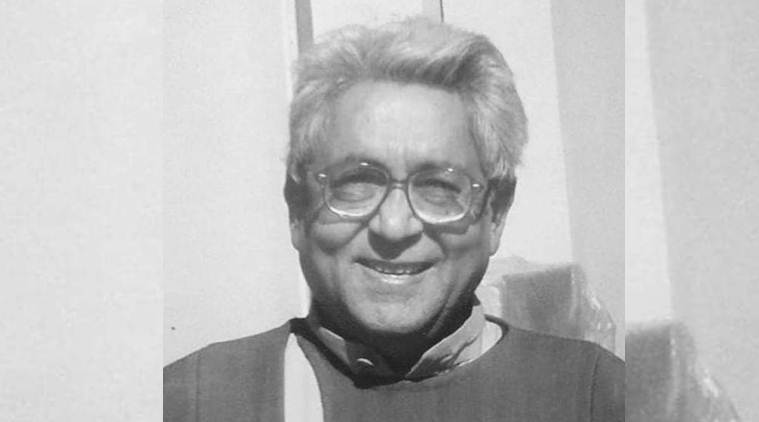Lath, a scholar, philosopher, musicologist and cultural historian, died in Jaipur on Thursday. He was 83.
On one of his regular thinking days, scholar, philosopher and musicologist Mukund Lath wanted to know about the origins of a well-established idea. How and when did the concept and word aadhunik (modern) emerge in Indian thought for the first time? Unlike how the world thought that it came up much later due to the intervention from the west and later the country’s own restlessness born out of tradtion, Lath discovered that the concept had already appeared in a text many centuries ago. Udyanacharya of Darbhanga, a logician from 10th century BCE, wrote in Sanskrit about Kashmiri Brahmins: “They are ancient, we are themodern.” In the world of performing arts, the concept came to the fore in the 18th century, when classical music and dance went the traditional way and theatre and visual arts became ‘aadhunik’ (modern),
Lath, through his research, pointed out that the concept had already appeared in Indian thought and wasn’t as new as one thought of it to be. It changed the way one understood the concept of India. “Here was Mukund Lath, a scholar who was not just satisfied with writing about tradition. He would pick up elements that would enlighten you. He was neither awed by tradition nor was he overpowered by modernity. This is because he could think of tradition and modernity in a continuum rather than as binaries. He was gentle and so sharp with every research and writing he did,” says poet and cultural critic Ashok Vajpeyi, Lath’s friend who had a 40-year association with him.
Eminent scholar, philosopher, musicologist and cultural historian Mukund Lath passed away on Thursday in Jaipur. He was 83.
Lath taught history at Rajasthan University and edited medieval texts. He was a noted musicologist, a disciple of Pt Jasraj when the world didn’t know who the musician was, an avid collector of modern Indian art, and published a journal called Unmeelan — the only journal devoted to philosophy in Hindi. He was honoured with a Padma Shri in 2010.
Born in Kolkata, Lath completed his graduation in literature from Delhi University and a Masters in Sanskrit from Jadavpur University. He also studied at Institute for Comparative Music Studies and Documentation, West Berlin for research on Dattilam, a significant and ancient treatise on the music of India. He later secured a doctoral degree (PhD) on the same subject from Delhi University in 1976.
Post colonial India had a tradition of serious ideational writing in Hindi with people like Vasudev Sharan Aggarwal, Motichand, among others leading the way. But this sort of writing dried up after them. “The only person who continued, doggedly and without much recognition, was Mukund Lath,” says Vajpeyi, who adds that his insights into Natya Shastra (Sanskrit treatise on performing arts), made Natya Shastra into something which is even relevant today. Then there was his work on tanpura and sarangi, where he spoke of the history and relevence of the instruments. He also did some remarkable translations of Sanskrit and Prakrit languages in Hindi.
Besides being a scholar who looked for unique subjects, Lath was also an avid collector of modern Indian art. His house in Jaipur is visited by a plethora of artistes and art critics because it harbours one of the finest collections of artwork. “He bought my father’s work in 1962, when he wasn’t even a famous artist,” says art critic Kalidas Swaminathan, noted artist J Swaminathan’s son. Kalidas also recalls another essay by Lath, ‘Transformation as Creativity’, which was written on thumri. “He was a philosopher. The nature of his work was enquiring into the aesthetics of a problem. He looks at the west’s approach to creativity vs our tradition where we embroider a given piece. I find it extremely interesting,” says Kalidas.
It is around the same time, in the late 60s, that Lath decided to learn Hindustani classical music and became a disciple of Mewat gharana legend Pandit Jasraj. This is again a time when Jasraj was only starting out as a musician and Lath was only about five years younger to his guru. “He was acutely aware that in the world of arts — to understand one form, you had to understand the other. If you had to understand music, you needed to understand literature, for which you needed to understand visual arts,” says Vajpeyi adding how barring a few exceptions, musicians today have no idea about what’s happening in poetry; poets don’t know what’s happening in dance; dancers don’t know know what’s happening in visual arts. “This distancing between the art forms has been made in the name of Indian tradition. Indian tradition was about interdependence. And Lath was not only aware of this, his writings represent this concept,” says Vajpeyi.
There is an inherent dichotomy in the world of Indian classical music — the idea that there is a set of rules and formal grammar to approach a raga and then the other idea that there is great freedom to approach the same raga. In a compelling and brilliant essay titled ‘Identity Through Necessary Change: Thinking About ‘Ra¯ga-Bha¯va,’ Lath argues that the identity of a raga “is maintained not despite change, but owing to the necessary change in every execution of the ‘same’ raga”. The depth and the intensity of Lath’s response also extends to a significant concept today — the notion of identity — in general and how “it’s rooted in change and not in stability or perpetuity”.
? The Indian Express is now on Telegram. Click here to join our channel (@indianexpress) and stay updated with the latest headlines
For all the latest India News, download Indian Express App.
Source: Read Full Article





